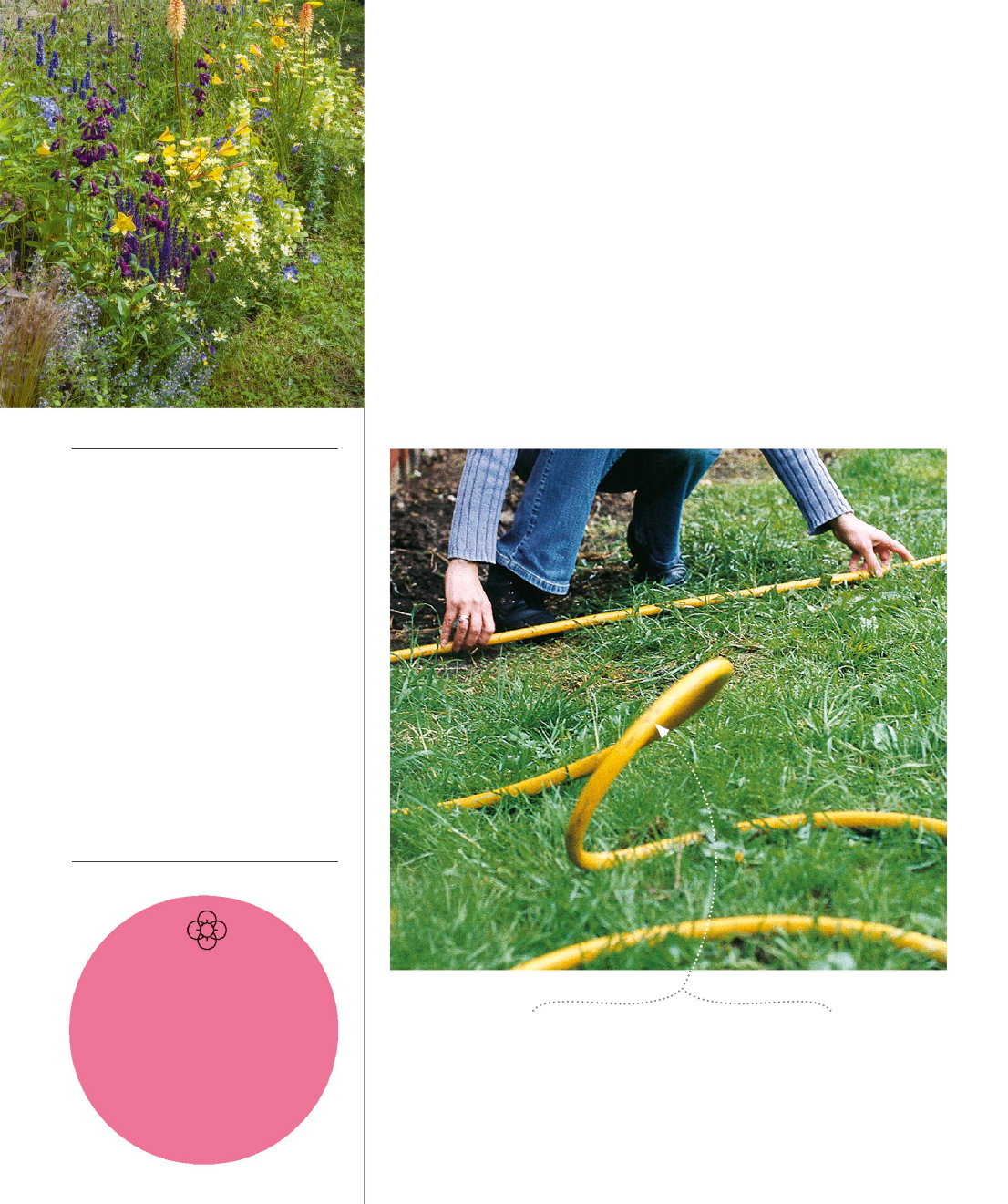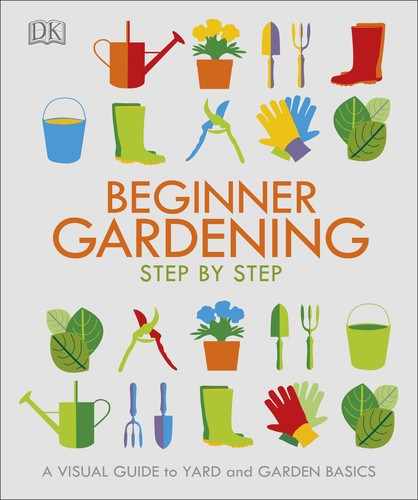
1
Decide where in the garden you want
your border and mark out its shape.
For a curved edge, use a garden hose.
Make sure the border is not too narrow
and that its shape suits the garden.
MAKING A BORDER
Flower and shrub borders provide color, scent, and
seasonal interest, making them an essential part of
the garden. Follow these basic steps when planning
and preparing your borders to ensure their success
through the year.
YOU WILL NEED
• half-moon sod cutter
• garden hose (for a curved border)
• spade and fork
• soil rake
• well-rotted farmyard manure
or garden compost
• sand or gravel
• wheelbarrow
SEE ALSO
• RAISED BEDS AND EDGES >> 50/53
• CHOOSING FLOWERS >> 54/57
• CHOOSING SHRUBS >> 140/143
LEFTOVER TURF
Leftover sod (see step 4) makes
excellent compost, once the
remaining grass has died off.
Alternatively, leave sod in a
corner of the garden for wildlife
such as mining bees to nest.
US_044-045_MakingBorder1.indd 44 07/09/2018 16:31

FLOWERS & FOLIAGE // MAKING A BORDER 44–45
CONTINUED
3
With a spade, begin stripping o the sod.
Cut it into manageable squares from above,
then slide the blade of the spade under the roots
of the grass. Try to avoid removing an excessively
deep layer of soil.
2
Using a half-moon sod cutter or a small
spade, carefully slice through the grass,
following the contours of the hose. Make sure
the cuts align properly, and push the full depth
of the cutter into the ground.
4
Stack the sod in a spare corner of the
garden, grass-side down. The soil in this
sod is nutrient-rich and should be reused.
After several months, the grass will die o,
and the pile can be cut up, sifted, and dug
into the borders.
US_044-045_MakingBorder1.indd 45 07/09/2018 16:31

6
With a spade, spread about 2 in (5 cm)
of organic matter, such as well-rotted
farmyard manure or garden compost, over the
surface of the border. Turn the organic matter
into the soil, and mix it in evenly.
5
Dig over the exposed soil with a fork, pushing
the sharp prongs down to their full depth.
Remove old roots, large stones, and debris that
you unearth, and break up large clods of soil.
Work the soil until it has a crumbly texture.
7
If the soil is heavy or poorly drained, spread
an 3 in (8 cm) layer of coarse sand or gravel
over it, and dig this into the top 6 in (15 cm) of soil
with a spade. This will help to open up drainage
channels through the soil in the root zone.
US_046-047_Making_a_border_2.indd 46 07/09/2018 16:31

FLOWERS AND FOLIAGE // MAKING A BORDER 46–47
Work the ground
during spring or
autumn when it is not
too cold, hard, or wet
9
Set out the plants, still in their pots, on the
ground, adjusting their positions until you
are happy with them. Pay attention to their
eventual size, flower and foliage color, and
season of interest to achieve your desired eect.
8
Using a soil rake, remove any remaining
stones, roots, or debris that may have
worked their way up to the surface. Then,
with the flat back of the rake, carefully level
o any mounds and hollows.
Keep plant
labels as a
reminder of
what you have
planted
US_046-047_Making_a_border_2.indd 47 07/09/2018 16:31

US_048-049_FlowersFoliage2_DPS.indd 48 07/09/2018 16:31
..................Content has been hidden....................
You can't read the all page of ebook, please click here login for view all page.
